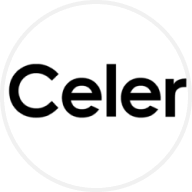Ketamine YC price
in USDCheck your spelling or try another.
Ketamine YC’s price performance
Right now, Ketamine YC has 220.00 holders, which may translate to its level of adoption and social credibility. It’s got a maximum supply of 1,000M – the number of Ketamine YC tokens won’t go beyond this limit. The current circulating supply is 1,000M, representing the number of Ketamine YC tokens currently available in the market. Ketamine YC’s liquidity of $212.14K also indicates how much of Ketamine YC can be bought or sold without significantly affecting its price.
Last updated: 31 Aug 2025, 06:20:15 pm
Guides

KYC FAQ
Dive deeper into Ketamine YC
Ketamine YC (KYC) is a decentralized digital currency leveraging blockchain technology for secure transactions.
Why invest in Ketamine YC (KYC)?
As a decentralized currency, free from government or financial institution control, Ketamine YC is definitely an alternative to traditional fiat currencies. However, investing, trading or buying Ketamine YC involves complexity and volatility. Thorough research and risk awareness are essential before investing. Find out more about Ketamine YC (KYC) prices and information here on OKX today.
How to buy and store KYC?
To buy and store KYC, you can purchase it on a cryptocurrency exchange or through a peer-to-peer marketplace. After buying KYC, it’s important to securely store it in a crypto wallet, which comes in two forms: hot wallets (software-based, stored on your physical devices) and cold wallets (hardware-based, stored offline).
Disclaimer
OKX does not provide investment or asset recommendations. You should carefully consider whether trading or holding digital assets is suitable for you in light of your financial condition. Please consult your legal/tax/investment professional for questions about your specific circumstances. For further details, please refer to our Terms of Use and Risk Warning. By using the third-party website ("TPW"), you accept that any use of the TPW will be subject to and governed by the terms of the TPW. Unless expressly stated in writing, OKX and its affiliates (“OKX”) are not in any way associated with the owner or operator of the TPW. You agree that OKX is not responsible or liable for any loss, damage and any other consequences arising from your use of the TPW. Please be aware that using a TPW may result in a loss or diminution of your assets. Product may not be available in all jurisdictions.



































